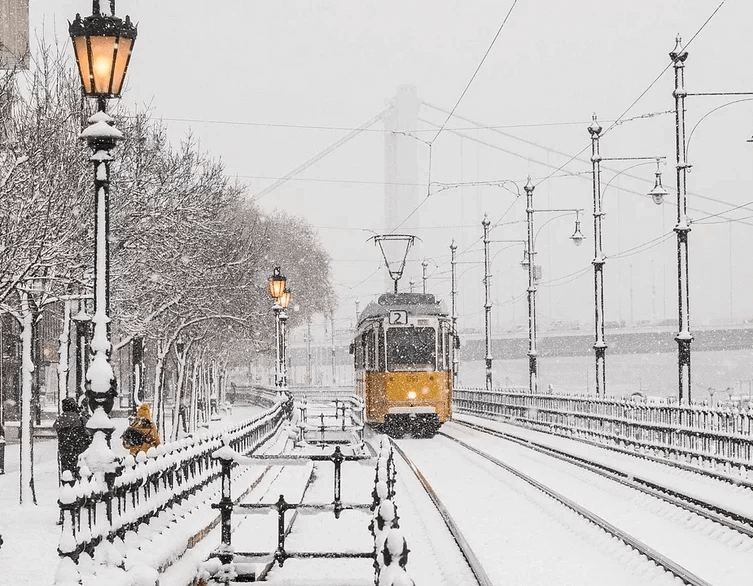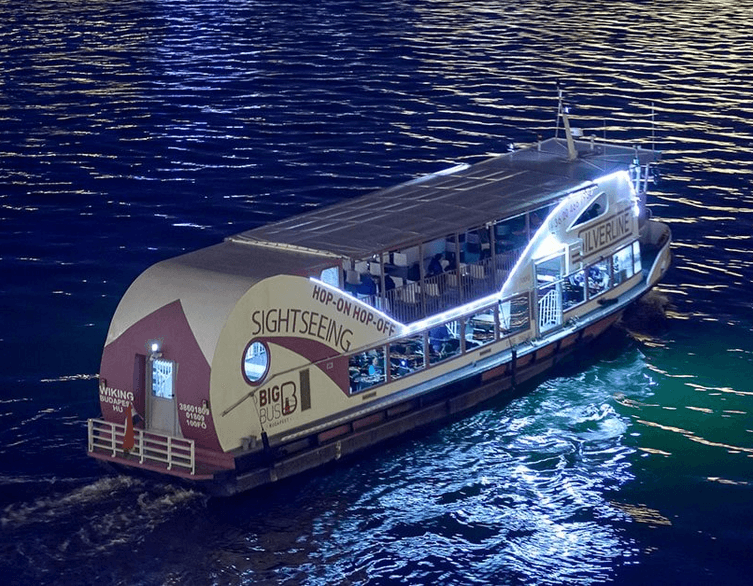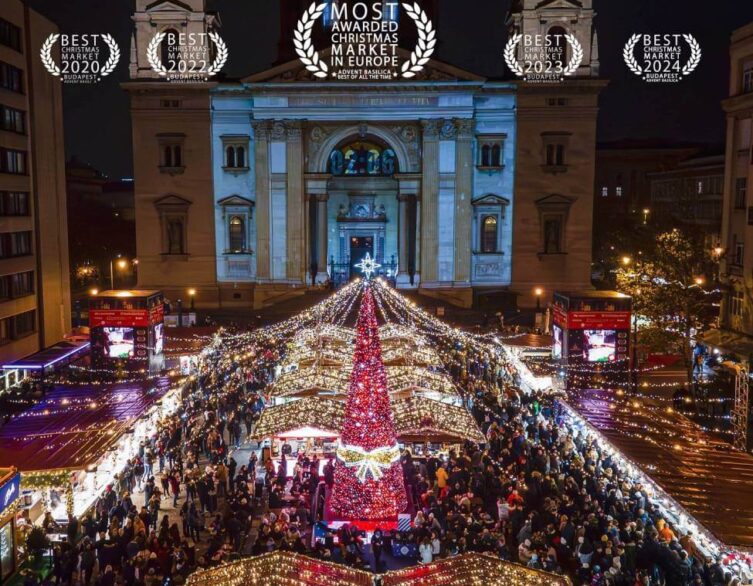First Snow in Budapest: What Visitors Should Know When the City Turns White

When the first serious snow of the season is about to sweep across Budapest, locals react with a mix of excitement and nervousness. For visitors, that same snowfall can either turn the city into a romantic winter postcard or create delays, slippery pavements and unexpected changes of plan. In the run‑up to the first major snow event of the season, Budapest’s mayor has issued a clear warning to residents about safety and transport, and those messages are just as useful for foreign tourists who will be sharing the streets, trams and pavements with everyone else.
Forecasters expect the first significant snowfall to blanket at least parts of the capital over an early winter weekend, bringing that magical “first snow” feeling to the Danube, the boulevards and the Christmas markets. At the same time, the city is preparing for the usual urban challenges: traffic jams, slower public transport on some routes and icy conditions underfoot. Budapest is not caught unprepared – snowploughs, salt stocks and winter maintenance plans are in place – but how smoothly the city runs depends heavily on how residents and visitors behave once the flakes start to fall.
Why Local Warnings Matter for Tourists
One of the strongest messages from the mayor’s office is directed at drivers: only those with properly maintained cars and real winter tyres should even consider taking to the roads during the first heavy snow. In Budapest’s dense traffic, a single car sliding on worn summer tyres can block a key junction or hill road and create queues that last for hours. For tourists who are thinking of renting a car or driving into the city from elsewhere in Hungary, this is a crucial point. In snowy conditions it is far wiser to leave driving to professionals who know the city and its winter quirks.
The second, even more important appeal is to choose public transport over private cars wherever possible. Budapest’s network of metros, trams and buses is extensive and, in winter, often more reliable than trying to navigate slippery streets by car. Underground lines are largely unaffected by snow, and even surface trams and trolleybuses run more smoothly if the roads are not clogged with stuck vehicles. For visitors, this means that on snowy days you should think in terms of metro lines, tram 4–6 along the Grand Boulevard or the M2 and M3 linking major sights, rather than taxis and car‑sharing. Not only will this save you time and stress, it also gives snowploughs and gritters the space they need to work.
How Budapest Fights Snow and Ice
Behind the scenes, the city’s public works and utility companies keep a fleet of around sixty winter service vehicles ready to roll as soon as the first snowflakes stick. Winter maintenance in Budapest follows a strict priority system rather than a random approach. That system directly affects how easy it will be for you to reach your hotel, catch a train or make it to a thermal bath or Christmas market during a snow event.
Best deals of Budapest
The first focus is always on the arteries that keep the city alive: bridges across the Danube, elevated roads, motorway feeder routes and the main radial and ring roads. These are treated in advance with salt or other de‑icing agents during the night so that early snow falls onto a pre‑treated surface, making it harder for ice to bond. Once these key routes are in acceptable condition, attention turns to the steep roads used by hill‑side bus lines in Buda and other crucial public transport corridors. Only after that do teams move on to roads leading to hospitals, clinics and major logistics centres. Residential side streets come last and may remain snow‑covered for some time if the snowfall is intense or prolonged. For tourists, this means central districts and major sightseeing routes are usually cleared first, while smaller backstreets in hilly neighbourhoods can stay tricky underfoot and under‑tyre for longer.
Staying Safe on Foot in Winter Budapest
Visitors often assume that the city itself is responsible for every pavement, but Hungarian law works differently. Property owners – whether private landlords, businesses or condominium communities – are responsible for clearing the pavement directly in front of their building and keeping it free of ice. In practice, this means that in busy downtown areas, many pavements are cleared and gritted fairly quickly, while in some quieter streets there can be a patchwork of well‑maintained sections and more slippery stretches where the residents are slower to act.
For you as a tourist, this has two simple consequences. First, winter‑appropriate footwear with decent grip is essential, especially if you plan to explore Buda’s hills, castle steps or riverside promenades during or after snow. Second, watch your step around entrances, kerbs and tram stops, where compacted slush can easily freeze into an invisible sheet overnight. If you do slip or have a near‑miss, it is rarely the fault of “the city” as a whole, but of a specific doorway or building frontage where the owner has not cleared properly – something local residents are increasingly aware of because legal responsibility can be enforced if someone is injured.
How Snow Changes Your Budapest Plans – and How to Enjoy It
A first major snowfall can slow Budapest down, but it can also make it more beautiful. Views from Buda Castle over a snow‑dusted Chain Bridge, an evening stroll through the Christmas markets with flakes swirling around the cathedral, or a dip in Széchenyi Baths while snow settles gently on the steam all become unforgettable experiences. To enjoy that magic without the stress, flexibility is key. Allow extra time between activities, avoid booking tight connections across the city during the heaviest hours of snowfall, and be prepared for some tram or bus lines to run a little slower than usual.
On the positive side, the same public transport that the mayor encourages locals to use is a tourist’s best friend in winter. Metros will still whisk you quickly between Deák Ferenc tér, Kálvin tér and the main railway stations. Iconic trams like number 2 along the Danube become even more photogenic in snowy weather. And if traffic on the surface looks chaotic, you can simply drop underground and bypass much of the disruption. In short, Budapest does not shut down at the first sign of white – but how smoothly your trip goes will depend on adopting the same common‑sense habits the city is asking of its residents: leave the car, dress and walk for winter, and let the snow add atmosphere to your Christmas‑season stay instead of turning it into a logistical headache.
Related news

















